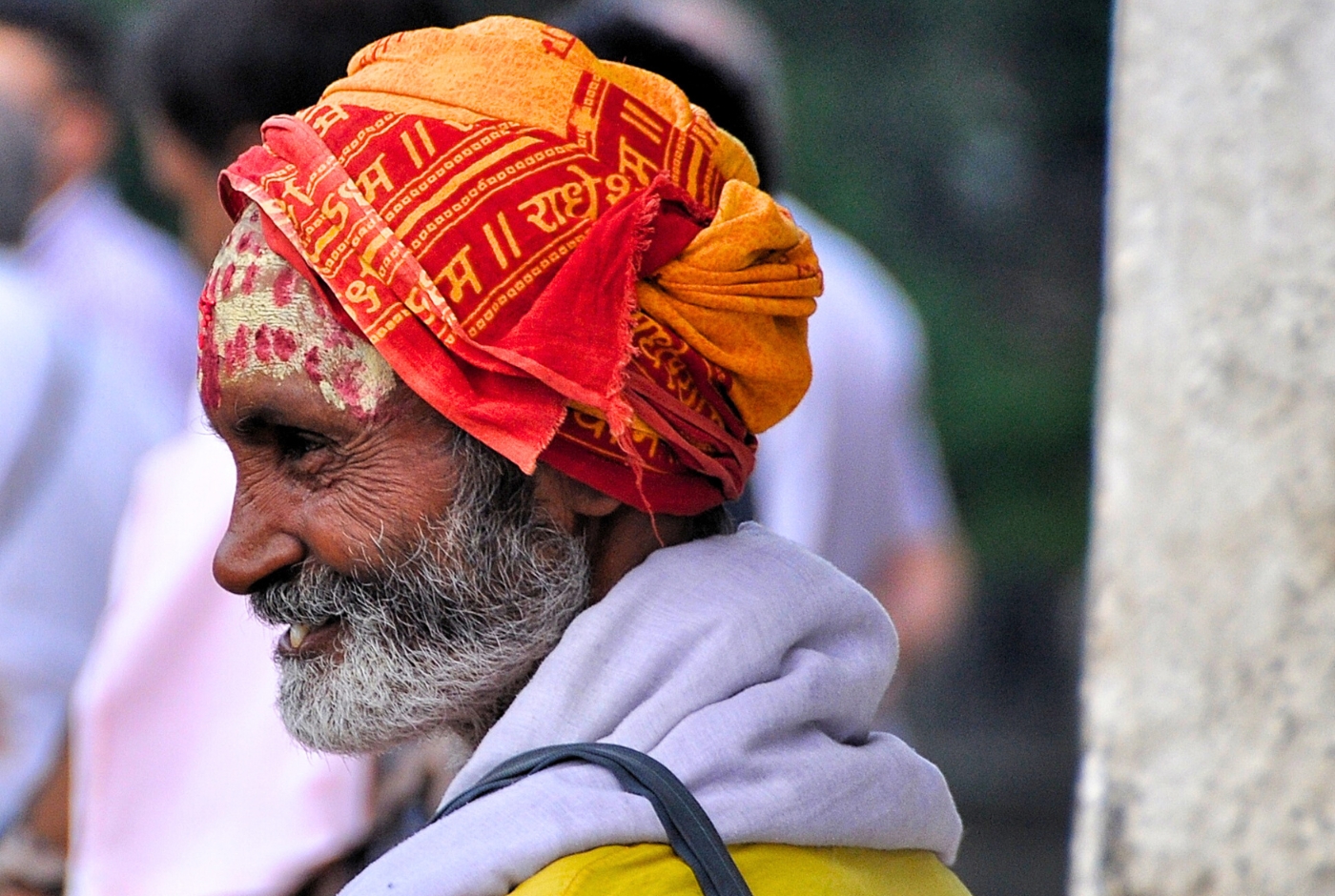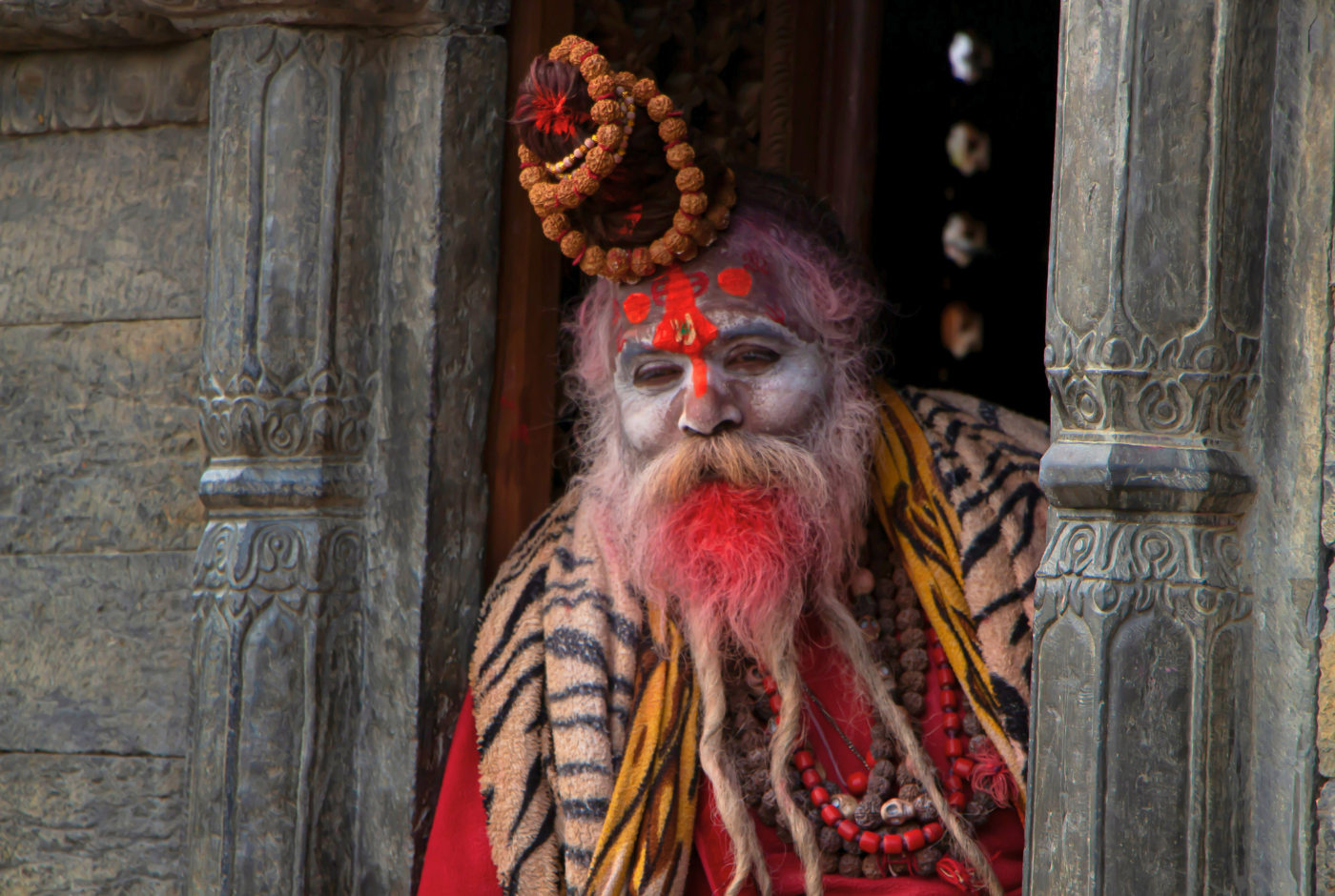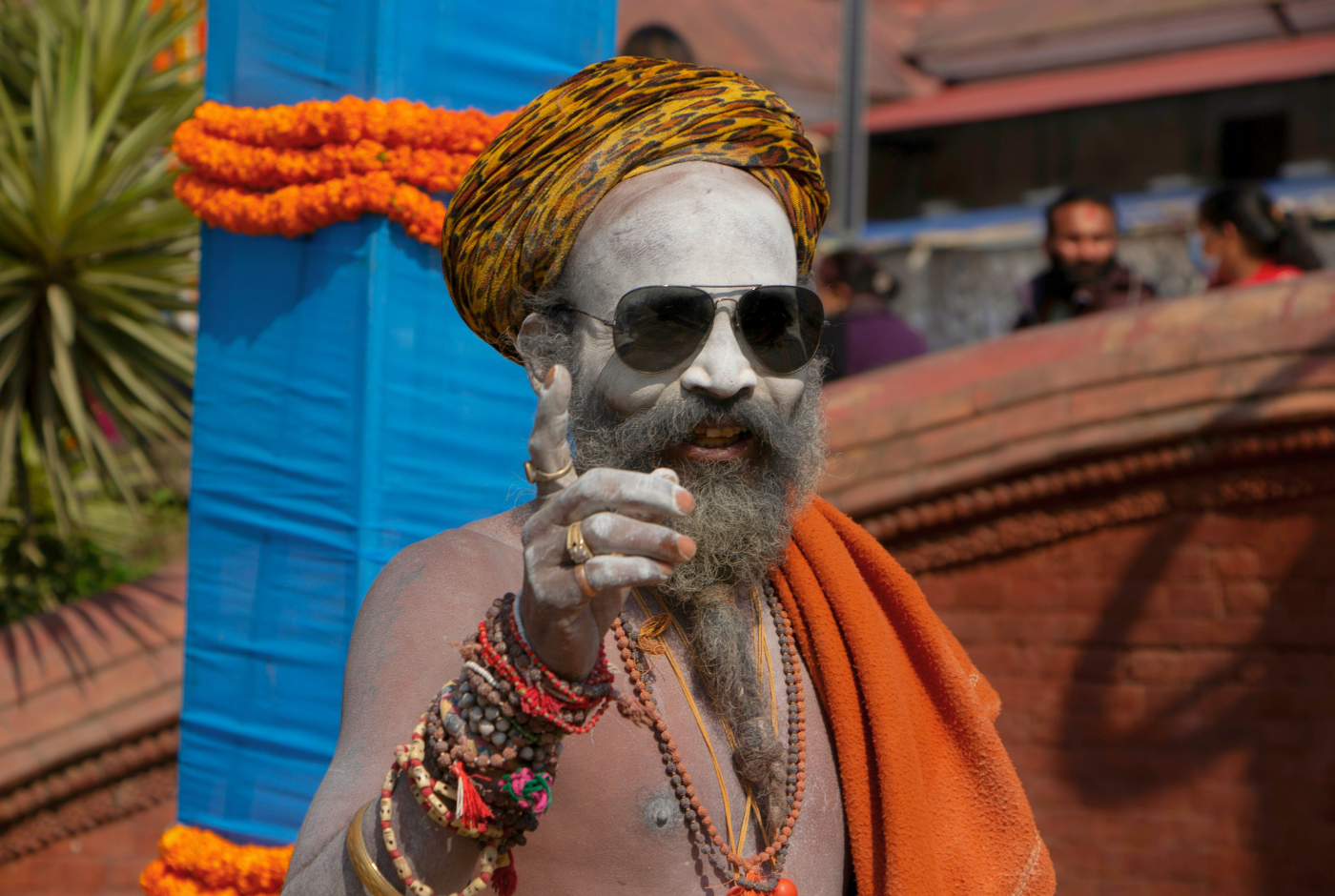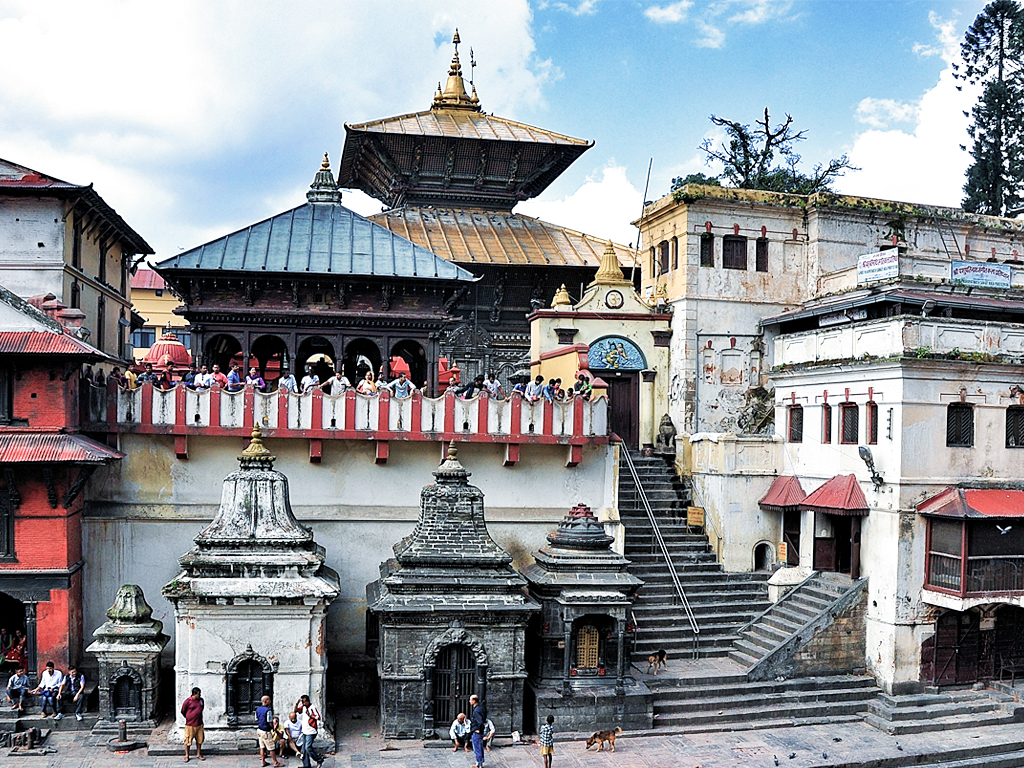- History and Significance of Maha Shivaratri: Story of Shivaratri
- Maha Shivaratri Celebration 2026
- The Night of Shiva: Legend and Significance
- Things You Can Do During Maha Shivaratri in Nepal 2026
- Tips to Improve Your Maha Shivaratri Experience
- Shivaratri Roadblocks: A Playful Tradition of Nepal’s Festive Spirit
- Maha Shivaratri Wishes & Status For 2026
Maha Shivaratri is the most significant event in the Hindu’s spiritual calendar. On this annual festival, devotees glorify and worship the life of Lord Shiva. They worship the lingam (symbol of Shiva), observe night-long fasting, and meditate on several ethics during the festival.
Masik Shivaratri falls on the fourteenth day of every lunar month. Out of all the twelve Shivaratris, Maha Shivaratri holds the most spiritual significance. It is observed on the fourteenth day of the waning moon in the Nepali month of Falgun (February/March).
In 2082 BS, Maha Shivaratri falls on Falgun 03, according to the Nepali calendar, which corresponds to Sunday, February 15, 2026, in the English calendar.
During this day, Pashupatinath Temple in Kathmandu witnesses a considerable surge of devotees and Sadhus (holy sage) offering their worship. Likewise, the devotees around the country celebrate this festival by worshipping Lord Shiva at various temples, rivers, and ponds.
On this day, married women in Nepal pray for the well-being of their husbands. However, the unmarried girls offer their worship to find a husband like Lord Shiva, who is considered the ideal husband.
History and Significance of Maha Shivaratri: Story of Shivaratri
- Different legends and traditional lores describe the significance of Maha Shivaratri discreetly.
- According to one legend, this is the night of convergence of Shiva and Shakti. It represents the significance of masculine and feminine energies to balance the world.
- A different legend states that this is the night when Lord Shiva performed Tandava — a cosmic dance of ‘creation, preservation, and destruction.’
- According to another one, Maha Shivaratri marks the wedding anniversary of Lord Shiva and Parvati. Thus, people who live in families observe this festival as a sacred union.
- According to Hindu mythology, this is the night when Lord Shiva saved gods and humankind from annihilation.
- It is believed that gods and demons once churned the ocean together to obtain ambrosia. From the depth, however, a pot of poison arose. Lord Shiva consumed the poison and ultimately saved the world from destruction. But, the poison resided in Lord Shiva’s throat and eventually turned him blue.

Maha Shivaratri Celebration 2026
Unlike most Hindu festivals, Maha Shivaratri isn’t just a blatantly joyous festival for feasting. Rather, it beholds the idea of self-reflection and personal growth by leaving behind everything that hinders our success.
The devotees around the world celebrate this auspicious day as per the customs and traditions dictated in the region. Here are a few ways devotees celebrate Maha Shivaratri:
- They practice night-long fasting and observe a vigil contemplating spirituality.
- They visit Shiva temples and holy rivers to offer their worship to the Lord.
- The devotees meditate on several ethics, chant mantras, sing songs, and listen to Lord Shiva’s stories.
- They participate in Rudra Puja or Mahashivratri Puja to honor Lord Shiva.
- People worship Shiva Lingam by offering Bel Patra (leaves of the bel tree), milk, sandalwood paste, white color flowers, and Dhaturo (a type of intoxicating plant).
- The devotees often donate food and clothes to the poor and needy at the end of the Maha Shivratri puja.
The Night of Shiva: Legend and Significance
The night was long, and the fires burned in the temples. Shadows flickered across the stone walls, and the scent of incense filled the air. It was Maha Shivaratri, the night of Shiva. Devotees came from every corner, their feet dusty, their voices rising in hymns that echoed against the hills. They fasted, they prayed, they offered water and milk to the lingam, the emblem of the god who walked beyond time.
Some said this was the night of the great dance. That somewhere beyond the reach of men, Shiva moved in a rhythm older than the stars, shaping the world with his steps. Creation, preservation, destruction—each footfall shaking the sky, each motion turning the wheel. In the temples, the chants rose higher, the drums rolled, and the faithful swayed in the rhythm of their god.
Others whispered of a wedding, the night Shiva and Parvati were bound together. The moon hung silver in the sky, the river ran dark, and in the stillness, the two became one. The mountains knew, the forests knew, and the winds carried their story across the land.
A few spoke of poison. Long ago, when the ocean was churned, a venom rose from its depths. It would have ended all things. But Shiva took it, held it in his throat, and his skin turned blue. They called him Neelkantha after that, the one with the dark throat. Some believed he had stood by a high place in the hills when it happened, where a temple now stood.
The night belonged to him. The bells rang, the flames danced, and in places like Konark, Khajuraho, and Chidambaram, dancers gathered as they always had. They moved as the ancients once did, each gesture carrying the weight of a thousand years. Natyanjali, they called it—offering through movement, prayer through motion.
Years ago, an Englishman named Cunningham walked through the fair at Khajuraho. He saw the pilgrims, the miles of tents, the flickering lamps. He wrote of them, but words could not catch the hum of the night, the way the world pulsed beneath the weight of belief.
In the end, the night passed as it always did. The sun rose, the fires cooled, the devotees left. But somewhere, in the space between silence and sound, the dance still went on.

Things You Can Do During Maha Shivaratri in Nepal 2026
Maha Shivaratri is largely celebrated in different parts of Nepal, especially by people following Hinduism. As one of the holiest Hindu shrines, Pashupatinath Temple is flooded with devotees and Sadhus from all over Nepal and India.
Here's a list of things you, as a tourist, can do to celebrate Maha Shivaratri in Pashupatinath Temple:
1. Observe the Shivaratri Vrat
Fasting is known to detoxify the human body and reduce the restlessness of the mind. If you’re looking to experience the spiritual aspect of Maha Shivaratri, you should consider observing a one-day fast. People follow strict fasting rules in Maha Shivaratri.
Most devotees observe the Shivaratri Vrat (or the Shivaratri Fast) to seek the blessings of Lord Shiva and boost the solemnity of their vows.
2. Meditate
On the night of Maha Shivaratri, the position of the constellations is considered significantly auspicious for meditation. Hence, you can try staying awake all night and meditating on Shivaratri.
For people who can not meditate all year long, this is the perfect day in the calendar year to practice it.
3. Attend Sandhya Aarati
Sandhya Aarati is an auspicious ritual held at the banks of the Bagmati River on the eastern side of Pashupatinath Temple. Truthfully, three temple priests conduct this sacred ritual every evening.
However, the aura of this ritual on Maha Shivaratri is out of the world. Hundreds of people gather around the podium to observe the ceremony. The ritual is performed by chanting mantras, singing hymns, lighting oil lamps, and playing classical music.
You can take a walk around the temple and attend this auspicious ceremony to experience absolute bliss.
4. Witness the Sadhus
On the eve of Maha Shivaratri, thousands of sadhus and babas congregate in the area of the Pashupatinath temple. If you take a walk around the temple, you are likely to witness these sadhus and baba with their ash-smeared faces and matted dreadlocks, smoking cigarettes mixed with marijuana.
In some areas around the temple, you can also witness the highly respected Naga Babas (The Naked Sadhus). Naga Babas are by far the most intriguing type of Shaivite sadhus. These sadhus take vows of celibacy and live in the frigid temperatures in the Himalayas without cover. These sadhus only care about the bare necessities of life. Hence, they strip down to their flesh and pay homage to Lord Shiva.
Tips to Improve Your Maha Shivaratri Experience
- Bring small bills when you walk around the Pashupatinath Temple. Since there are loads of colorful markets around the temple premises, you may want to buy a thing or two. In such cases, having small notes can come really handy.
- If you’re traveling in a group, watch out for your friends every once in a while. There will be a massive crowd around the Pashupatinath area. Thus, it is quite easy to get lost. If you lose any of your friends, you can contact the nearest police and announce his/her name through speakers.
- Also, pay great attention to your belongings, including your wallet, mobile phone, or camera.
- If you want to take photographs of Sadhus, make sure to ask for their permission. Some of these ‘holy men’ may demand a small amount of money for the photos. To clear out the confusion, ask for their permission, negotiate the price, and hand over the money before you take the picture.
- Wear comfortable boots or shoes while walking around the temple. Avoid sandals or slippers as the route can often be overcrowded.
- Do not buy or smoke marijuana in public. While it is common to see people buying and smoking weed around the premises of Pashupatinath Temple, it is still against the law.

Is Maha Shivaratri Holiday in Nepal?
Yes, Maha Shivaratri is a national holiday in Nepal (Falgun 03, 2082/ February 15, 2026) because it is a highly revered Hindu festival where people celebrate and honor Lord Shiva, a prominent deity in Hinduism, making it a significant religious observance for the majority of the Nepali population; the festival is particularly celebrated at the Pashupatinath Temple, considered one of the holiest Shiva shrines globally, with devotees gathering to perform rituals and seek blessings. This festival is a public holiday in Nepal, with schools, offices, and businesses typically closed to honor Lord Shiva.
When is Maha Shivaratri in Nepal? Date of Maha Shivaratri 2026
Maha Shivaratri in Nepal 2026 is on February 15, corresponding to Nepali date 2082, Falgun 03 (2081/11/03), Sunday.
When was Maha Shivaratri in Nepal? Date of Shivaratri 2025
In 2081 BS, Maha Shivaratri was on Falgun 14, according to the Nepali calendar, which corresponds to Wednesday, February 26, 2025, in the English calendar.
What is Shivaratri celebrated for? Why it is important?
Maha Shivaratri is a Hindu festival that celebrates the marriage of Shiva and Parvati, and the dance of creation, preservation, and destruction performed by Shiva. It is also a time to remember Shiva and to overcome darkness and ignorance.
Why do we not sleep in Shivaratri?
According to Hindu beliefs, people traditionally stay awake on Shivaratri (particularly Maha Shivratri) because it is considered a night of heightened spiritual energy, where staying awake allows for deeper meditation and connection with the divine, with some spiritual leaders like Sadhguru explaining that maintaining a vertical spine posture throughout the night can further enhance this experience; essentially, the idea is to be fully present and conscious during this powerful time.
How can I celebrate Mahashivratri in Nepal?
To celebrate Mahashivratri, you can: observe a fast, visit a Shiva temple, perform a special puja at home by offering prayers, flowers, and milk to the Shiva lingam, meditate, chant "Om Namah Shivaya" mantra, participate in bhajan singing, and stay awake throughout the night to keep vigil in devotion to Lord Shiva; many devotees also engage in acts of selfless service (seva) on this day.
Key aspects of celebrating Mahashivratri:
- Fasting: Many people choose to fast on Mahashivratri, either completely or by consuming only fruits and milk, as a sign of devotion.
- Temple visit: Visit a Shiva temple to offer prayers, perform abhishek (ritual bathing) of the Shiva lingam with milk, honey, water, and other offerings.
- Puja at home: Set up a Shiva lingam at home, decorate it with flowers and bilva leaves, and perform a puja with offerings like incense, diya, and sweets.
- Chanting: Recite the "Om Namah Shivaya" mantra repeatedly throughout the day.
- Meditation: Practice meditation to deepen your connection with the divine.
- Bhajan singing: Attend or participate in bhajan sessions where devotional songs dedicated to Lord Shiva are sung.
- Night vigil: Stay awake throughout the night, chanting prayers and reflecting on Shiva's teachings.
- Seva: Engage in acts of selfless service like volunteering at a temple or serving food to devotees.
Where to celebrate Maha Shivaratri festival in Nepal?
To experience Maha Shivaratri in Nepal, you can visit these top Shiva temples:

Major Shiva Temples:
- Pashupatinath Temple (Kathmandu) – The most revered Shiva temple in Nepal, a UNESCO World Heritage Site, attracting thousands of devotees, sadhus, and pilgrims. Pashupatinath Temple opened at 2:15 AM this morning for devotees to offer prayers and celebrate the grand festival of Maha Shivaratri.
- Gokarneshwor Mahadev Temple (Kathmandu) – A peaceful temple near the Bagmati River, with significant rituals and gatherings.
- Kailashnath Mahadev Statue (Sanga, Bhaktapur) – The world's tallest Shiva statue, offering breathtaking views and grand celebrations.
- Doleshwor Mahadev Temple (Bhaktapur) – Believed to be the head of Kedarnath in India, this temple sees a large number of devotees on Shivaratri.
- Bhaleshwor Mahadev Temple (Chandragiri) – Located atop Chandragiri Hill, a spiritually significant site with stunning views of Kathmandu Valley.
Local Temples and Community Celebrations:
Small Shiva temples in local areas offer an authentic experience, where people gather to worship, chant bhajans, dance, and distribute prasad. Communities light sacred fires, cook special food (Rice pudding (khir), vegetables, and pickles), and hold night-long vigils.
In villages and town squares, locals come together in devotion, making the festival lively and deeply connected to Nepal’s cultural roots.
For a grand spiritual experience, visit Pashupatinath, but if you seek a more intimate and traditional celebration, local temples in neighborhoods and villages will give you a raw and heartfelt connection to Maha Shivaratri.
How to Do Shivaratri Fasting? What Do People Really Do? (Strict Maha Shivaratri Rule)
Maha Shivaratri fasting is one of the strictest Hindu fasts, observed to seek Lord Shiva’s blessings, spiritual purification, and self-discipline. Devotees prepare a day before by eating a sattvic meal, avoiding grains, onion, garlic, and non-vegetarian food. The next day, after taking a ritual bath, they begin the fast with full devotion.
Three types of fasting during Maha Shivaratri:
Nirjala Upvas (no food, no water), Phalahari Upvas (fruits, milk, and water), and Water Fasting (only drinking water, no solid food).
Those following the strictest rule abstain from eating, drinking, and even sleeping for 24 hours, dedicating the entire time to meditation (dhyan), mantra chanting, and temple rituals.
During the fast, devotees visit Shiva temples (mandir), perform Abhishek (sacred bath) of Shiva Lingam with milk, honey, curd, ghee, and water, and offer Bilva (Bel Patra) leaves, Dhatura flowers, and sandalwood paste.
The powerful mantra "Om Namah Shivaya" is chanted throughout the day. Many observe Jagran (staying awake all night), singing bhajans (devotional songs), and reading Shiva Purana to enhance spiritual energy.
Devotees also light an Akhand Jyoti (continuous lamp) as a symbol of devotion and divine energy. Married women pray for a long and happy married life, while unmarried girls seek a devoted husband like Lord Shiva.
People of Nepal and India during Maha Shivaratri
In Nepal and India, Maha Shivaratri is celebrated with grand temple gatherings, holy processions, and ascetic rituals. In places like Pashupatinath (Nepal) and Kashi Vishwanath (India), thousands of sadhus, including Naga Babas (naked monks covered in ash (Kharani)), participate in Aghori rituals, fire ceremonies, and meditation.
Many devotees consume Bhang (cannabis) and Dhatura, which are traditionally associated with Lord Shiva. In villages, people light bonfires, tell stories of lord Shiva-Parvati, and perform masked dances. The next morning, devotees end their fast with prayers, charity to the needy, and a simple sattvic meal.
Shivaratri Roadblocks: A Playful Tradition of Nepal’s Festive Spirit
During Shivaratri in Nepal (February - March), it’s common to see local kids setting up small roadblocks using ropes, sticks, or makeshift barriers to stop vehicles and ask for money. This tradition isn’t meant to cause trouble but is a playful way for children to engage with passersby and collect small donations. The money they receive is often used for temple offerings, buying sweets, or simply enjoying the festive spirit with friends.
What Exactly Do They Do?
- Blocking Roads: Kids tie ropes or place wooden logs across small streets and highways, signaling vehicles to stop.
- Asking for Donations: They cheerfully request a few rupees from drivers and passengers, often with laughter and playful persistence.
- Using Creativity: Some groups add fun elements—singing, dancing, or chanting "Jai Shambho!"—to make the experience lively.
- Religious Connection: Many believe giving money on Maha Shivaratri is auspicious, as charity on this holy day brings blessings from Lord Shiva.
Why Is This Accepted?
- Cultural Tradition: This has been happening for generations, and most locals see it as part of the festival fun.
- Spirit of Celebration: It adds to the excitement of Shivaratri, with bonfires, music, and temple visits happening across the country.
- Community Bonding: Kids, often from the same neighborhood, team up and enjoy the activity together, strengthening friendships.
While some travelers and drivers might find it unusual, for locals, it’s just another way to celebrate one of Nepal’s biggest Hindu festivals with energy and enthusiasm.
Shivratri Vs Mahashivratri: What is difference between Shivratri and Mahashivratri?
Shivratri is a monthly celebration, while Mahashivratri is an annual festival that takes place in the Hindu month of Falgun. Both festivals are dedicated to Lord Shiva and are celebrated with fasting, prayer, and meditation.
Shivratri
- Also known as Masik Shivratri, this festival is celebrated on the 3rd day of each lunar month.
- It marks the monthly anniversary of Shiva and Parvati's wedding.
- It symbolizes Shiva's cosmic dance and marriage.
Mahashivratri
- Also known as the "Great Night of Shiva", this festival is celebrated on the 3rd day of the month of Falgun.
- It is the most spiritually significant festival of Lord Shiva.
- It celebrates the convergence of Shiva and Shakti.
- It emphasizes the importance of overcoming darkness and ignorance.
- It commemorates the divine acts of Lord Shiva, such as marrying Maa Parvati, performing the Tandav, and consuming the Halahal poison.
Both festivals bring devotees together who seek to rouse a spiritual awakening.
Maha Shivaratri Wishes & Status For 2026
- 🕉 "May Lord Shiva’s divine blessings fill your life with peace, prosperity, and happiness. Om Namah Shivaya! 🔱✨ #MahaShivaratri"
- 🔱 "Har Har Mahadev! May this Maha Shivaratri bring strength, wisdom, and devotion into your life. 🙏🔥 #ShivaratriBlessings"
- 🌿 "On this sacred night, surrender to the divine power of Mahadev. Wishing you a blissful and blessed Maha Shivaratri! 🕉️✨ #OmNamahShivaya"
- 🌙 "May the sound of 'Om Namah Shivaya' resonate in your heart, bringing joy and positivity. Happy Maha Shivaratri! 🕉️💙 #ShivaBlessings"
- 🔥 "Celebrate Maha Shivaratri with devotion, meditation, and prayers. May Bholenath remove all negativity from your life. 🙏✨ #HarHarMahadev"
- 🕉️ "Wishing you and your family a Maha Shivaratri filled with divine blessings, happiness, and success. May Lord Shiva guide your path. Om Namah Shivaya! 🙏✨"
- 🔱 "May the blessings of Bholenath bring you inner peace and strength to overcome all obstacles. Happy Maha Shivaratri! 🕉️🔥"
- 🌺 "On this holy occasion of Maha Shivaratri, may Mahadev shower you with love, wisdom, and prosperity. Har Har Mahadev! 🔱🌙"
- 🌿 "Let’s celebrate this divine night with prayers and devotion. May Lord Shiva’s grace be with you always. Happy Maha Shivaratri! 🙏✨
- 🔥 "May this Maha Shivaratri bring enlightenment, positivity, and new beginnings into your life. Om Namah Shivaya! 🌙💙"



